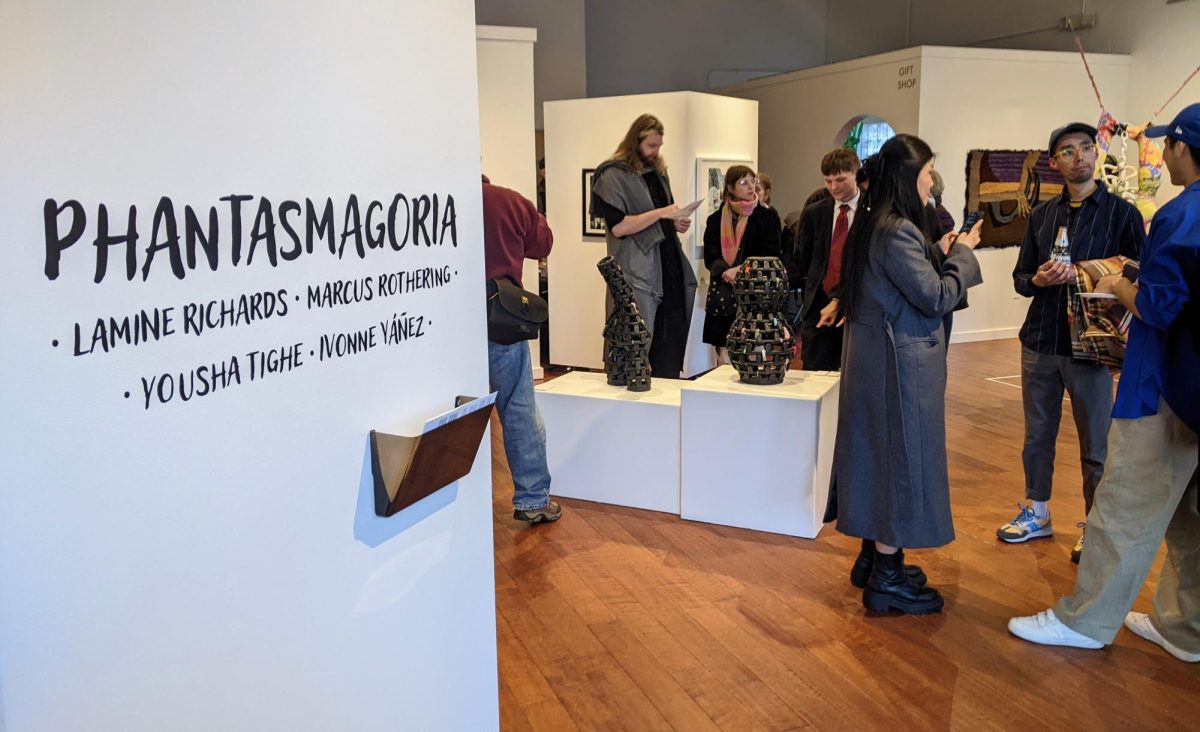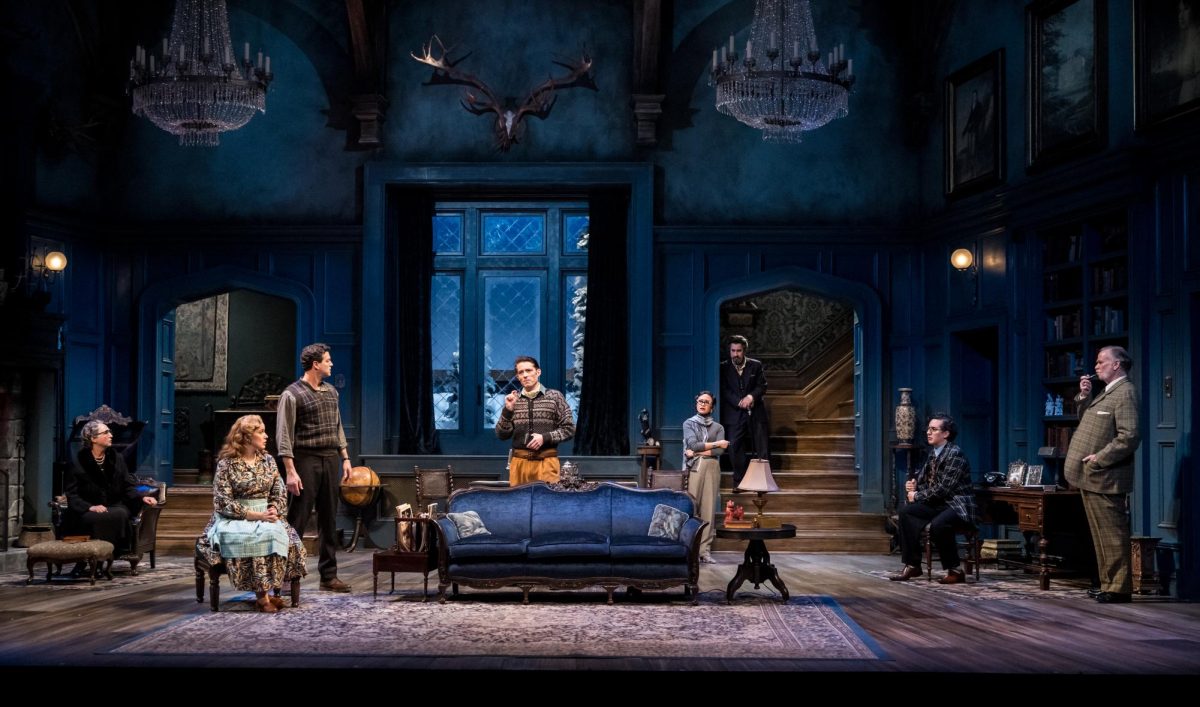The image seems innocent enough, like something out of a kiddie pulp comic: a raven-haired schoolgirl with a bob cut and a striped orange blouse licks a chocolate lollipop. But upon closer glance, the lick smacks of sex and the sucker is really an eyeball on a stick. In gusty, chiseled font, the image advertises an evening with the Melvins in Troy, N.Y., some October ago. It may seem gross or wildly distasteful to the average square, but in Adam Turman’s world, this is the stuff that rock ‘n’ roll dreams are made of.
WHEN: Now through August 12, Thursday and Friday 2 p.m. to 8 p.m., Saturday and Sunday 12 p.m. to 5 p.m.
WHERE: Soap Factory, 518 Second St. S.E., Minneapolis, (612) 623-9176
TICKETS: Free
www.soapfactory.org
In Plaster the Town 2007, the gig poster is sucked out of its usual habitats – off record store bulletins and urban electrical poles – and hung up in the Soap Factory’s beer-encrusted factory gallery space for a transplanted gawking experience. From artist and artist clusters like Squad 19 and Amy Jo Hendrickson to DWitt, Tooth and Burlesque of North America, the exhibit pays testament to the art of those who straddle the jagged edges between advertising junkie, artist, graphic designer and music fan.
The space is crawling with clandestine, creepy and psychotropic color droppings and stenciled beauties. But the kaleidoscope of posters isn’t just an aesthetic meat market created solely for the arty voyeuristic crowd. Instead, they tell a story of their own – a musical narrative not only fashioned as a tale of the Twin Cities’ venues but also as an allegiance to its musical liaisons.
Artists have their own thematic vices and virtues, and their stylistic palates vary greatly from genre to genre, band to band. For Turman, he’s all about the seedy Bettie Page types. Amy Jo does glitter and ancient mythology, among other things. And as for Squad 19’s Steve Tenebrini, he gravitates toward the psychedelic and the morbid.
“I like skulls,” he said flatly.
Up until a few years ago, screen printers operating in Minneapolis and St. Paul did so virtually unaware of one another. It wasn’t until they realized they were unknowingly stepping on one another’s toes (i.e. doing posters for the same gig, un-kosher in their world) that they formed S.P.A.M. (Sexy Poster Artists of America), a networking coalition of gig-poster artists.
“We all just came together, had beers and went bowling,” Tenebrini said.
S.P.A.M., as well as events like Plaster the Town, allows the artists to mingle, swap expertise, and ensure that no gig in the Twin Cities goes without an inked masterpiece. And through it all, their keen sense of humor keeps the scene fresh.
“Aesthetic Apparatus and Burlesque are the main event, and all the rest of us are the midget wrestlers getting the crowd warmed up,” Tenebrini joked.
The technical process of screen printing involves the forcing of ink (using a squeegee) through a mesh screen stretched onto a frame. The ink then disperses itself onto the poster according to the stencils or specificity of desired shape or shade.
“Imagine pushing ink through the screen door on the front of your house,” Tenebrini explained.
Amy Jo’s first screen-printing experience began modestly in an apartment using a screen, a cardboard box, a light bulb and a plastic spoon from a fast food eatery.
“I learned in the crudest method possible,” she said.
For Aesthetic Apparatus owners and operators Michael Byzewski and Dan Ibarra, their screen-printing adventures blossomed through their years enmeshed in Madison’s music scene.
“We would be like, ‘Oh, sweet, Meat Puppets are coming! Let’s make a poster!’ It was the most naïve, innocent thing in the world,” Ibarra said.
Since their relocation to the Twin Cities in 2002, they’ve evolved into a design studio run by Byzewski and Ibarra, guys who, in their own diabolical opinion, will “break your heart and drink your blood.” But really, they’re just adorable and charming Ö and a tad geeky.
In general, the cultural demand for screen prints tends to wax and wane, depending on the musical fads of the era. Although the practice has existed for centuries – dating back to the stenciling on prehistoric cave walls – it really entered into the American cultural sphere in the 1960s with the proliferation of Mr. Warhol and the Pop Art movement. Rock ‘n’ roll artists adopted the form to advertise gigs; psychedelic rock and New Wave created a surge in the circulation of screen-printed gig posters; disco, not so much.
But in the age of Napster and iTunes, album art – like the American record store – is becoming more an endangered species than an esteemed artifact of music culture. But what about the highly revered band tee? They too eventually share the fate of most clothing articles – the thrift store or the rag bin.
But gig posters, according to Aesthetic Apparatus, have gladly stepped in to take their proverbial place at the intersection of music, fandom and cultural sentimentality.
“Posters offer that visual experience for fans,” Byzewski explained.
And really, it’s nearly impossible to imagine our urban landscape – or the walls of a college dorm room – without them.







